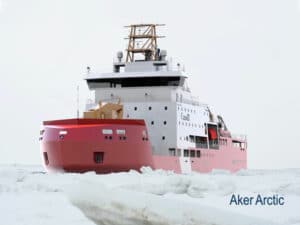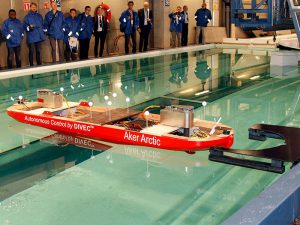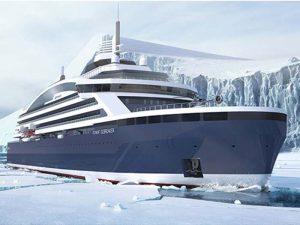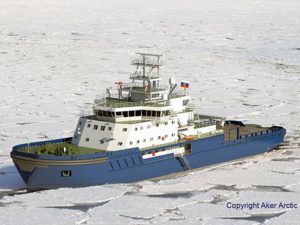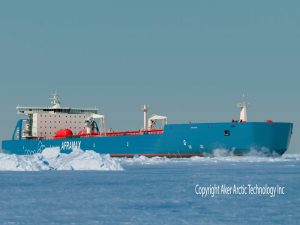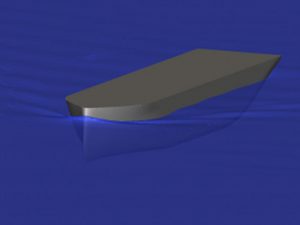Designed by Aker Arctic, the icebreaker will support LNG carriers’ operability in the approach channel to the Sabetta harbor and in the terminal at Sabetta. With a length of 89.5 m, draft of 6.5 m and 12 MW propulsion power, it has been designed to proceed at a speed of two knots in level ice 1.5 m thick and at four knots in 5 m thick brash ice in limited water depth.
ABB will provide the power, automation and turbocharging capabilities for the vessel, which will maximize fuel efficiency and maneuverability by including four Azipod thrusters, adapted for the tough ice conditions and ABB’s DC Grid system, to distribute energy effectively. The main engine will also be fitted with a Power2 800-M advanced two-stage turbocharging system, enabling the highest efficiency turbocharging performance.
Peter Terweisch, ABB Group Senior Vice President, Process Automation says, “ABB’s marine applications are at the forefront of the icebreaking market with our process automation technology now central to the world’s most advanced icebreaking vessel. We are very pleased to be able to deliver industry leading levels of efficiency and safety by providing so many ABB latest generation solutions on one vessel.”
The vessel’s ABB Onboard DC Grid systemhas many advantages. It provides space and weight savings whilst minimizing noise and vibration. A key advantages is that it allows diesel engines to run at variable speeds, rather than one fixed speed, is important when managing ice conditions. This flexibility can also cut fuel use and emissions.
Two pairs of Azipod thrusters will be fitted on the bow and stern of the ship, all of which will be adapted to the conditions. They will be equipped with powerful electric motors (3 MW each). Turning 360 degrees, they will allow the ship’s crew to maneuver the vessel to operate stern or bow first.
Aker Arctic’s Mika Hovilainen says “The harbor icebreaker is a totally new concept especially developed for heavy harbor ice conditions with extensive thick brash ice. Having four Azipod units helps to take operability, maneuverability and ice management capability to one step further. Along with ABB Marine and Ports, we continue to be at the cutting edge of icebreaking technology.”
The icebreaker’s ABB Integrated Power and Energy Management System and Marine Automation System bring together main elements of the ship’s performance, such as power generation and propulsion, into a centralized system allowing the operator to increase efficiency and safety.
The Power2 800-M two-stage turbocharging system on the icebreaker’s Wärtsilä 31 engine, will further enhance fuel efficiency and flexibility of operations. With a low pressure and high pressure stage, it provides higher air pressure ratios, up to 12 from 8 in the previous generation. Compared to a single-stage turbocharger operating at 65-70% efficiency, Power2 800-M goes beyond 75% efficiency, the only system currently available across the large engine industry with this capability.
The turbocharging system responds to the need for new marine engine technology to offer consistency of performance across conventional and newer marine fuel options. This application will demonstrate the advances in efficiency and power density now available for four-stroke engines operating across a wide range of load profiles and facing added demands of emissions legislation.

